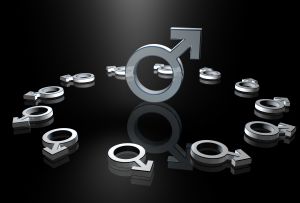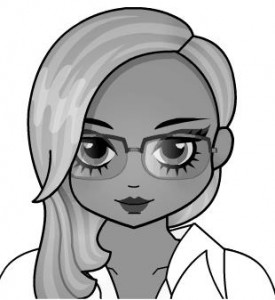After browsing WHOF.net (Wipeout Homophobia on Facebook) I was recently having a conversation with a friend about pansexuality, trying my best to explain to him what it meant. “It means you love everyone no matter their sex or gender,” I said, to which he promptly retorted, “So, you can’t leave a pansexual person with a couch or they’ll end up fucking it!?”
Now obviously he was being sarcastic, but in his sarcasm I realized that I didn’t explain that well, or at least not effectively, which got me to thinking, ‘Do I even know what pansexuality meant?’ So I did some research. And beyond the many porn sites that pop up on Google, here is what I gathered—which you, whoever is reading this, will be able to hopefully add to.
Etymologically, pansexuality derives from the prefix ‘pan’, which means “all” or “every” and comes from Ancient Greece (there was also a Greek god named Pan, who was the god of fertility and mischief), and the suffix ‘sexual’, which obviously relates to attraction. So, a literal translation would look something like, ‘attracted to all’. But it’s not quite that.
Instead, pansexuality is a transcendence of identity in attraction. Unlike a bisexual person who can be attracted to both sexes or genders (or combinations thereof), or heterosexual who are attracted to the opposite sex, or homosexual who are attracted to the same sex, or polysexual who are attracted to multiple genders and/or sexes, or even polyamory which is the desire to be intimate with more than one person at once, pansexuality, rather, is the inclusion of all gender and sex identities of attraction.
While there can be many similarities between polyamory, polysexuality and pansexuality, at their core, they are three distinct forms of attractions. Though this isn’t to say that they can’t overlap within an individual, it would simply make that individual all three. But a few distinctions can be made.
First off, polyamory and polysexuality’s multiplicity within their definition distinguishes them from pansexuality, which doesn’t imply multiple but rather all or every. Then of course there’s polyamory’s desire for multiple partners at once, which isn’t necessarily pansexuality, since a pansexual person can be, and often is, monogamous. Polysexuality, while it does mean a diverse attraction, does ultimately mean that a particular individual is limited in their attraction and is not attracted to everyone.
This then leads to the confusion of the “all”. Does this mean that a pansexual person must be attracted to everyone? In short, no. A pansexual person isn’t limited to gender or sex in their attraction, but within each gender or sex, like people of other [insert]sexuality, pansexual people can find a particular look favoring or displeasing. It just simply means it has nothing to do with that person’s gender or sexuality.
Then there’s the psychological history of pansexuality. In this, like most things in psychology, it begins with Freud, in which a major thesis of his was that the sexual instinct embodies the human will or desire, derived from his theory of Eros. Again, Eros has a long historical legacy that begins with the Greeks.
 Eros and Psyche: Eros, the son of Aphrodite, who is later translated by the Romans as Cupid, is sent to force Psyche, the most beautiful of mortal princesses, to fall in love with the ugliest creature because men are abandoning Aphrodite’s temples because they’re drawn in by Psyche’s beauty and, essentially, Aphrodite is jealous. But, like most of the Greek gods, Eros doesn’t do what he’s told and falls in love with Psyche. The two’s bliss is destroyed when Psyche’s sister tricks Psyche to betray Eros, causing him to leave her, which then leads to Psyche to wander Earth in search for her love. Long story short: Psyche comes across Aphrodite, who makes her complete a series of tasks, which Psyche completes, and Psyche and Eros live happily ever after.
Eros and Psyche: Eros, the son of Aphrodite, who is later translated by the Romans as Cupid, is sent to force Psyche, the most beautiful of mortal princesses, to fall in love with the ugliest creature because men are abandoning Aphrodite’s temples because they’re drawn in by Psyche’s beauty and, essentially, Aphrodite is jealous. But, like most of the Greek gods, Eros doesn’t do what he’s told and falls in love with Psyche. The two’s bliss is destroyed when Psyche’s sister tricks Psyche to betray Eros, causing him to leave her, which then leads to Psyche to wander Earth in search for her love. Long story short: Psyche comes across Aphrodite, who makes her complete a series of tasks, which Psyche completes, and Psyche and Eros live happily ever after.
To get back to pansexuality, Psyche is the embodiment of the human soul in constant search for attraction. It is that drive within us to feel a certain connectedness, spiritual, emotional, or physical, within this plane. While the Greek myth fortunately didn’t end in tragedy, it does suggest that humanity is driven to succeed in finding that connectedness, which shouldn’t be denied because of one’s gender or sex. So, in summation, pansexuals are the living reincarnations of Psyche wandering this world for the all.
To learn more visit this link at WHOF.net here —-> Pansexuality
Pansexuality: The Things You Don't Know,





Alix
5 Feb 2012I can tell the author tried really hard to explain the differences, but I just didn’t quite get it.
Stoicheion
5 Feb 2012As a person who’s both poly and pan. All I can say on behalf of everyone in either community is that everyone has a different opinion on what it means to them. There’s no text book universal definition of what either means. Just ask us and we’ll tell you!
As a pansexual: Pan, to me, means that I’m attracted to who a person is rather than what junk they have in their pants. Gender identity/sex isnt an issue.
As a poly person: Certainly it doesn’t mean that I desire to be with more than one person. Committing to have sex with only one person is fine with me; I can do that. But I’m going to feel for people how I feel. One can be in love with more than one person and have a fully committed relationship regardless of sexual activity. Remember how, in high school, you learned that you can have more than one BFF? It’s kind of like that.
Alix
6 Feb 2012I appreciate your attempt to clarify for me, but it’s still a little foozy. That’s okay. I don’t have anyone around me who has sexual identity issues and wants or needs my help, so for now anyway, I don’t need to understand better.
bialogue
5 Feb 2012people should of course identify as whatever they feel best fits them, however it is important to not define other queer people by using fake definitions made up primarily by our anti-LGBTQ+ detractors, this includes not misidentifying bisexual people
here is how historically the bisexual community actually defines itself:
a “cute” twitter-ish version:
Bisexuals = people who {heart} People of Same Gender as themselves + {heart} People of Different Genders/Gender Presentations from themselves
the longer more formal version:
Bisexuals are people with the inborn capacity to form enduring physical, romantic, (some include spiritual) and/or emotional attractions to
(1) those of the same gender as themselves
(2) those of different genders/gender presentations from themselves
There may be an individual attraction for one gender or gender presentation which can also be fluid and changeable over time.
Bisexuality is not synonymous with being polyamorous, (some include “or promiscuous”). Individual bisexual people may be celibate, asexual, monogamous or non-monogamous just as individual straight, lesbian or gay people can be.
No matter what the gender/gender presentation of the person they are partnered with, bisexual people remain bisexual. They do not suddenly switch orientation as if by magic when they enter into a relationship.
——————–
Just as no one of good will in this day and age would even think of defining gay men as pedophiles; lesbians as simply women who cannot catch a husband or transfolk as just men in a dress; equal weight must be given to the bisexual community when we say who we are
So may we most respectfully ask you to please correct that inappropriate description of bisexual people you have accidentally included?
Thanks
Pingback: Sexuality and Identity | (PG)^2
Pingback: TWERKING, THE SECRET SATANIC BOOTY CULT & THE COVERT WAR AGAINST THE SACRED FEMININE | In Search of Black Assassins